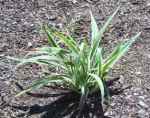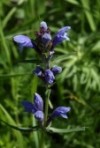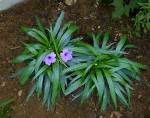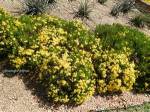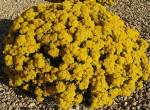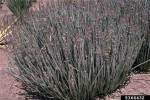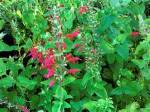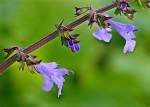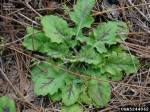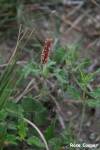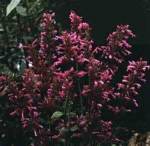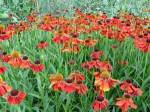All the following plants are Texas natives and evergreen unless otherwise noted. They are drought tolerant and grow no more than three feet.
It would look best to choose only two or three of the following plants. Several are listed in case they are not available at local nurseries. Note: Calylophus berlandieri was previously recommended, but I would like to withdraw it since it is deciduous. On 11/20/12 I removed Plumbago auriculata and Hamelia patens because these two plants die back from even the lightest freeze.
Why choose Texas native plants?
“They help conserve water, reduce mowing costs, provide habitat for birds, butterflies and other wildlife, protect the soil and save money on fertilizer and pesticides.” Native plants are disappearing at a high rate which reduces “wildlife habitat and the genetic diversity necessary for balanced ecosystems. Native plants introduced into landscape plantings are hardy, less susceptible to pests and diseases and unlikely to escape and become invasive. With properly selected native plants, it may not be necessary to modify soil characteristics at all to have thriving gardens.” – from http://www.wildflower.org/whynatives/.
The criteria I used for selecting plants are:
- Attractiveness
- Whether it’s well-behaved
- Texas native (exceptions are noted)
- Drought-tolerant
- Requires full-sun
- Height no more than three feet
- Evergreen
Sources for this list include http://www.wildflower.org/ and http://plants.usda.gov/java/ to determine whether the plant is a native. The following were all used for sources for lists of drought-tolerant plants.
- http://www.wildflower.org/
- http://www.swallowtailgardenseeds.com/tips_lists/drought-tolerant-plants.html#gsc.tab=0
- http://www.floridata.com/lists/drought_tolerant_plants.cfm
- http://austinnativelandscaping.com/xeriscape-texas-native-plants-for-drought-toleran-landscaping-in-austin-texas/
- http://www.sunset.com/garden/flowers-plants/low-water-plants
The first plant can be seen at the Discovery Garden.
Dianella tasmanica ‘Variegata’ – Flax Lily is growing well at the Discovery Garden. It could be divided and would look nice among the newly-spread rocks at Capitol of Texas Park. It is evergreen. It’s flowers are insignificant. It is grown for it’s foliage.
Scutellaria wrightii Violet flowers summer to fall. Note: A royalty-free image was not readily available. This is an approximation.
Ruellia brittoniana Native of Mexico. Listed as a Texas Superstar. Note: According to the Missouri Botanical Garden (http://www.missouribotanicalgarden.org/PlantFinder/PlantFinderDetails.aspx?kempercode=c952) there are other scientific names including R. coerulea, R. malacosperma, and R. tweediana with R. simplex the preferred name.
The following plants are slightly taller than the above.
Chrysactinia mexicana Yellow flowers.
Ericameria laricifolia Blooms in fall. Small yellow flowers.
Euphorbia antisyphilitica A very unusual plant to use as an accent plant. It is in the same family as poinsettia.
Salvia greggii Evergreen version of the salvia in the Discovery Garden
Salvia lyrata Blue flowers with different leaves than the version of salvia in the Discovery Garden.
Melampodium leucanthum looks a lot like zinnia. Zinnia acerosa would be a good alternative if Melampodium leucanthum is not available.
Symphyotrichum oblongifolium and Symphyotrichum oblongifolium – fall asters.
Penstemon triflorus – flowers & growth habit similar to snapdragon.
Acalypha radians – a very unusual plant good for rock gardens.
Agastache cana Texas Hummingbird Mint http://www.finegardening.com/texas-hummingbird-mint-agastache-cana
Helenium autumnale ‘Mariachi Salsa’ – Perennial, Texas Native
Gomphrena haageana – Annual, Texas Native
Leave a comment
